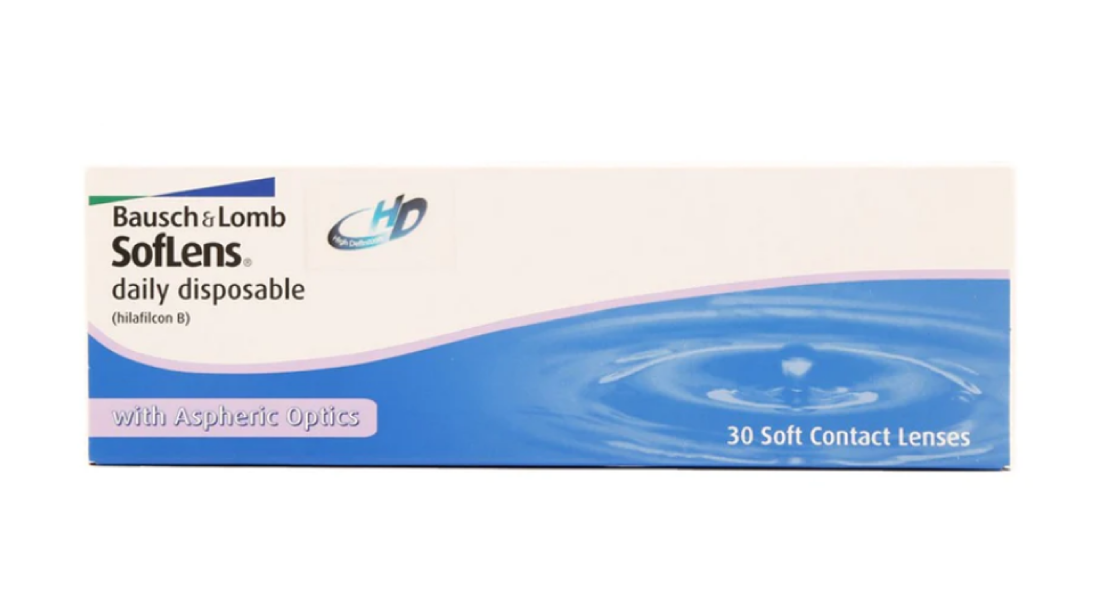- Home
- Contact Lenses
- Type : Non Toric
Non Toric Contact Lenses
Contact Lenses for clear vision without glasses.

loading
loadingloading
loading
loadingloading
loading
loadingloading
loading
loadingloading
loading
loadingloading
loading
loadingloading
loading
loadingloading
loading
loadingloading
loading
loadingloadingBestsellers
View AllDoes your vision often get blurry all of a sudden? Or do things look more warped than usual? If, indeed, it sounds like you, it could be a case of astigmatism. It is a condition caused by the unconventional shape of the cornea, which may then resemble a football. Besides experiencing blurry vision, you may also experience eye fatigue, headaches, or strain when looking at something up close or from far away, depending on the level of astigmatism.
Astigmatism is a condition that affects how the cornea in your eyes directs light to the retina. It is a refractive error that occurs because of an uneven or abnormal curvature of the cornea. It causes distorted or blurry vision, making it challenging to figure out details and shapes at any distance.
Astigmatism is inborn, but it can also develop at any age. It can result from genetics, disease, eye injury, or surgery. While the minor cases may not require any primary treatments, moderate to severe cases require lens correction with the aid and support of glasses, contact lenses, or surgery. Most doctors prescribe contact lenses for astigmatism to correct any visual distortion.
Since the distorted shape of your cornea causes astigmatism, you require special contact lenses for eye correction. Many optometrists suggest toric contact lenses for astigmatism as they move with your eyeballs at every angle.
Toric contact lenses have a vertical and horizontal axis and are based on the part of the lens you are looking through. Thus, the corrective power varies. These lenses are made with thick material and are heavier at the base to support the prescription needs. Astigmatic lenses are for those with blurry vision, and if you do not get the correct contact lens for your eyes, the condition may worsen.
Eye doctors advise against wearing regular contact lenses as such lenses do not cover your cornea completely and leave areas of your vision unprotected. Instead of choosing regular contacts, consult an eye doctor about the types of lenses you must wear.
If your condition is severe, the doctor may suggest Rigid Gas Permeable (RGP) toric contacts. These are hard contact lenses. This helps promote a better flow of oxygen into your eyes. On the other hand, a non-toric lens is a replacement intraocular lens that does not address astigmatism. They are available in trifocal, monofocal, and multifocal varieties and are most commonly used for cataract surgery.
The essential benefit is that the non-toric lenses can better address near and intermediate vision, but it is still the daily eyewear that is necessary to fix astigmatism and rectify the vision. Besides, additional procedures, such as limbic relaxing incisions, may be required to improve astigmatism during or after an eye surgery such as a cataract.
Those with cataract surgery can use non-toric contact lenses. Suppose you have "regular" astigmatism, the type that can be corrected with glasses or a soft contact lens. In that case, a toric lens can make you less dependent or not dependent on glasses for distance. Still, you can choose a non-toric lens and wear glasses or contact lenses to correct astigmatism after undergoing cataract surgery. "Irregular" astigmatism needs a more rigid contact lens to correct. This type of astigmatism gets better with a non-toric lens implant. A doctor can suggest your type based on the preoperative measurements in cataract surgery.
Eyes that can use non-toric lenses are simple in design and shape, just like a natural drop of water. The non-toric contact lens shape is a matter of eye curvature fit along with the desired focal length. The toric lenses include a cylinder specification that shifts from the simple spherical shape.
Since astigmatism tends to follow specific patterns in its irregularity, it is relatively easy for an eye doctor to prescribe correction. Lenses for astigmatism have positioning techniques that often include a bit of suction to keep them in place on the eye, making them less comfortable and more difficult to remove when the day ends than non-toric lens types.
A non-toric lens may, by lying on the eye surface in a spherical shape, make up for your minor astigmatism. Your eye doctor may offer a primary option of a non-toric contact lens, even though your eyeglass prescription is more complex, saving you money and widening your choices. Since astigmatism can worsen over time, you may need to change to toric lenses at some point.
To know more about Toric and Non-toric lenses, visit the Titan Eyeplus website and check out a diverse range of non-toric lenses as per your needs.
What is the difference between toric and non-toric lenses?
The uncorrected distance visual acuity is relatively better in the toric lenses, whereas the uncorrected 50-centimeter visual acuity is better in the non-toric lens. There was no noteworthy difference in contrast sensitivity with or without the glare between both.
What is the major difference between regular lenses and toric lenses?
The primary difference between them is that of design. Regular lenses have just a single power lens, but toric lenses have distance vision and astigmatic lenses embedded in both lenses. Toric lenses are available as daily disposable lenses, soft disposable contact lenses, and frequent replacement lenses.
Can I wear regular lenses if I have astigmatism?
No, if you have astigmatism, you must wear specialized contact lenses as your condition can worsen if you do not. Regular contact lenses do not cover the cornea fully, therefore, impairing your ability to see even further.
Between toric lenses and non-toric lenses, which is better for cataract surgery?
As per research, toric lenses produce better visual results after cataract surgery and correct astigmatism more effectively than non-toric lenses.
How can I know if I have astigmatism?
Astigmatism is diagnosed with an eye examination. A complete eye exam involves several tests to check your eye health and refraction. Your eye doctor may use many instruments and aim bright lights directly at your eyes, asking you to look through several lenses.
What part of the eye does astigmatism affect?
Astigmatism occurs when either the cornea or the lens has mismatched curves. The surface is egg-shaped instead of a round ball, causing blurred vision at all distances.
Can astigmatism go away naturally?
No, it does not. Either it stays the same or worsens with age. While this reality can seem daunting, the good news is that it can be easily corrected.
How do you permanently cure astigmatism?
Astigmatism can be corrected with the aid and support of contact lenses, eyeglasses, and refractive surgery or even cataract surgery,
Can glasses fix astigmatism?
Glasses or contact lenses can correct almost all cases of astigmatism. But if you have mild astigmatism and no other vision problems, you may not need them.
What happens if astigmatism is left untreated?
If you have astigmatism, you may be unable to see objects in the distance or nearby without distortion. If left untreated, astigmatism may cause eyestrain, blurry vision, and headaches.







